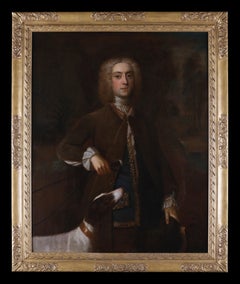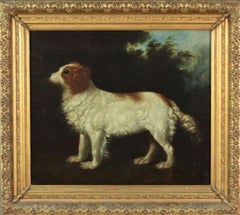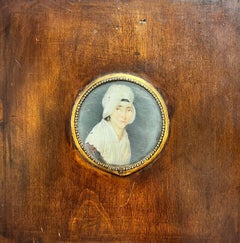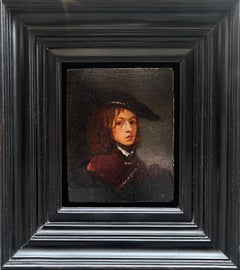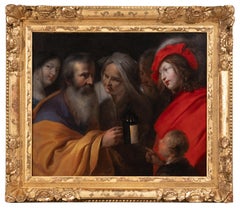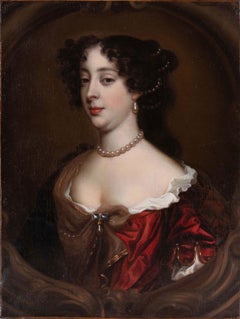18th Century and Earlier Portrait Paintings
Old Masters 18th Century and Earlier Portrait Paintings
Oil
English School 18th Century and Earlier Portrait Paintings
Canvas, Oil
Old Masters 18th Century and Earlier Portrait Paintings
Watercolor
18th Century and Earlier Portrait Paintings
Oil, Oak, Panel
Old Masters 18th Century and Earlier Portrait Paintings
Canvas, Oil
18th Century and Earlier Portrait Paintings
Oil
Old Masters 18th Century and Earlier Portrait Paintings
Oil
Old Masters 18th Century and Earlier Portrait Paintings
Oil
Old Masters 18th Century and Earlier Portrait Paintings
Canvas, Oil
Old Masters 18th Century and Earlier Portrait Paintings
Canvas, Oil
Old Masters 18th Century and Earlier Portrait Paintings
Canvas, Oil
Old Masters 18th Century and Earlier Portrait Paintings
Oil
English School 18th Century and Earlier Portrait Paintings
Canvas, Oil
Old Masters 18th Century and Earlier Portrait Paintings
Oil
French School 18th Century and Earlier Portrait Paintings
Oil, Canvas
Old Masters 18th Century and Earlier Portrait Paintings
Oil, Wood Panel
Italian School 18th Century and Earlier Portrait Paintings
Oil, Wood Panel
18th Century and Earlier Portrait Paintings
Oil, Canvas
Baroque 18th Century and Earlier Portrait Paintings
Oil, Canvas
18th Century and Earlier Portrait Paintings
Oil
Old Masters 18th Century and Earlier Portrait Paintings
Canvas, Oil
Rococo 18th Century and Earlier Portrait Paintings
Oil
Old Masters 18th Century and Earlier Portrait Paintings
Canvas, Oil
Old Masters 18th Century and Earlier Portrait Paintings
Canvas, Oil
Old Masters 18th Century and Earlier Portrait Paintings
Canvas, Oil
Old Masters 18th Century and Earlier Portrait Paintings
Oak, Oil, Panel
18th Century and Earlier Portrait Paintings
Canvas, Oil
18th Century and Earlier Portrait Paintings
Oil, Wood Panel
Rococo 18th Century and Earlier Portrait Paintings
Canvas, Oil
Old Masters 18th Century and Earlier Portrait Paintings
Oil
Baroque 18th Century and Earlier Portrait Paintings
Canvas, Oil
Old Masters 18th Century and Earlier Portrait Paintings
Oil, Wood Panel
18th Century and Earlier Portrait Paintings
Oil
Old Masters 18th Century and Earlier Portrait Paintings
Canvas, Oil
English School 18th Century and Earlier Portrait Paintings
Oil
Old Masters 18th Century and Earlier Portrait Paintings
Canvas, Oil
Old Masters 18th Century and Earlier Portrait Paintings
Oil
Old Masters 18th Century and Earlier Portrait Paintings
Oil
Old Masters 18th Century and Earlier Portrait Paintings
Oil
Old Masters 18th Century and Earlier Portrait Paintings
Canvas, Oil
18th Century and Earlier Portrait Paintings
Oil
Old Masters 18th Century and Earlier Portrait Paintings
Oil
18th Century and Earlier Portrait Paintings
Canvas, Oil
Old Masters 18th Century and Earlier Portrait Paintings
Oil
18th Century and Earlier Portrait Paintings
Copper
Old Masters 18th Century and Earlier Portrait Paintings
Canvas, Oil
Old Masters 18th Century and Earlier Portrait Paintings
Oil
Old Masters 18th Century and Earlier Portrait Paintings
Oil
18th Century and Earlier Portrait Paintings
Oil, Panel
Old Masters 18th Century and Earlier Portrait Paintings
Oil, Canvas
Old Masters 18th Century and Earlier Portrait Paintings
Oil
18th Century and Earlier Portrait Paintings
Oil
Old Masters 18th Century and Earlier Portrait Paintings
Oil
Old Masters 18th Century and Earlier Portrait Paintings
Oil
Old Masters 18th Century and Earlier Portrait Paintings
Oil
Baroque 18th Century and Earlier Portrait Paintings
Canvas, Oil
18th Century and Earlier Portrait Paintings
Canvas, Oil
Old Masters 18th Century and Earlier Portrait Paintings
Canvas, Oil
Old Masters 18th Century and Earlier Portrait Paintings
Oil
Old Masters 18th Century and Earlier Portrait Paintings
Oil
Read More
Cecilia Vicuña Merges Politics, Science and Spirituality in Her Poetic Art
The Chilean creator, who has been living in exile in New York for decades, is having a major moment, receiving the biggest exhibitions, commissions and awards an artist could dream of.
In Christopher Spitzmiller’s New York Homes, His Love of Dogs Is on Full Display
The ceramist, designer and gentleman farmer tells us about the collection of antique dog art he has spread across a New York City apartment and a Greek Revival farmhouse in the Hudson Valley.
This Wiener Werkstätte Master Made Everything into Art
Koloman Moser smashed the conservative conventions of art and design in fin-de-siècle Vienna. On the 100th anniversary of his death, the Austrian designer is being celebrated for his radically modern creations.
